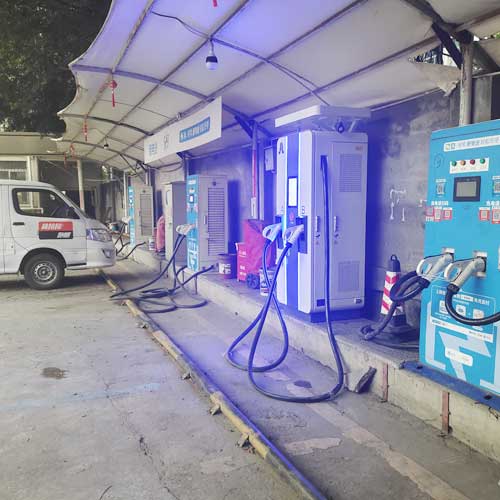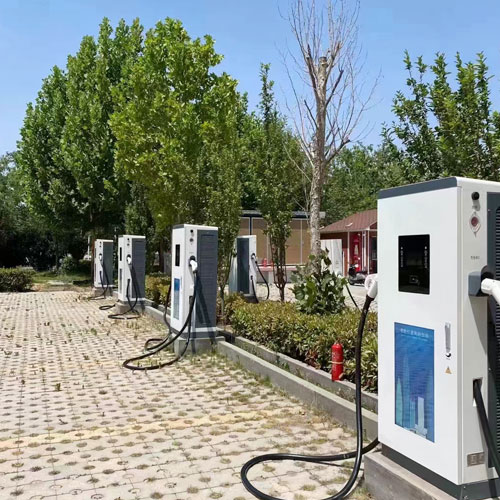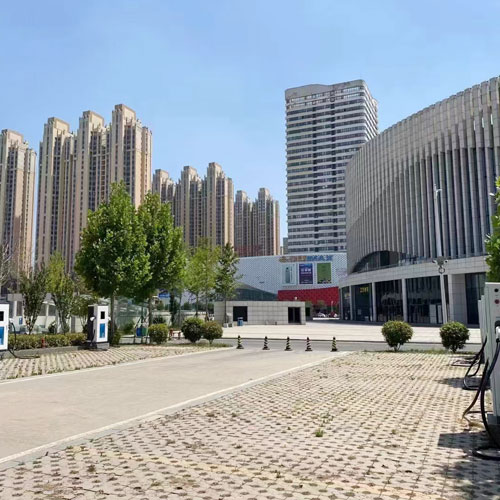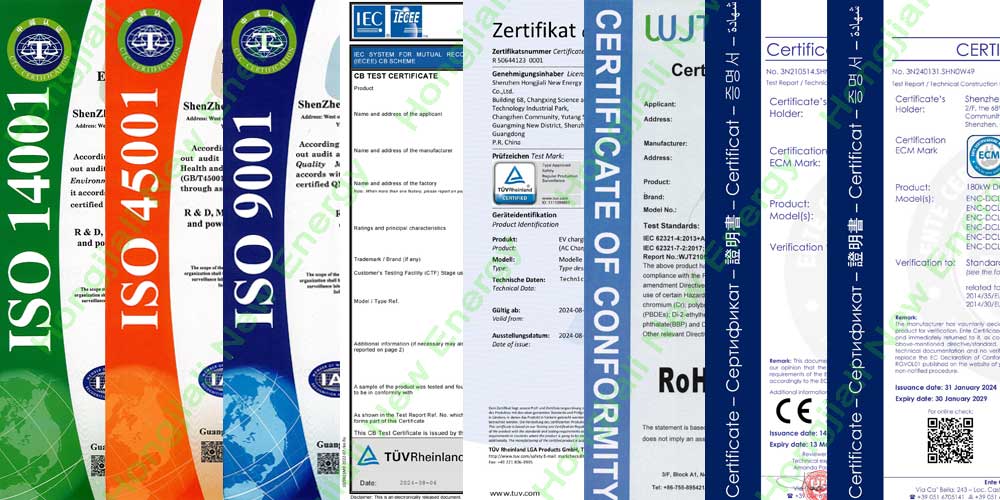Fast electric car ev charger charging stations are used for home and commercial installations, using 380 volts DC for charging, with an output power range of 30 kW to 240 kW, which can charge the batteries of electric vehicles. Providing a complete electric vehicle charging solution, including high-quality, reliable DC fast charging stations and powerful connectivity, the equipment can provide fast charging at charging stations installed along busy traffic corridors.
Fast electric car ev charger charging station 30 kW to 240 kW product parameters are as follows:
Parameters | Requirements | ||||||||
General Requirements | |||||||||
EV Charger Type | DC | ||||||||
Charger Capacity | 30KW | 40KW | 50KW/60KW | 80KW | 90KW/100KW | 120KW | 160KW | 180KW | 240KW |
Equipment size | L700*W450*H1680(mm) | L750*W750*H1920(mm) | |||||||
Product Model NO. | ENC-DCL030A | ENC-DCL040A/B | ENC-DCL060A/B | ENC-DCL080B | ENC-DCL100B | ENC-DCL120B | ENC-DCL160B | ENC-DCL180B | ENC-DCL240B |
ANSI-DCL030A | ANSI-DCL040A/B | ANSI-DCL060A/B | ANSI-DCL080B | ANSI-DCL100B | ANSI-DCL120B | ANSI-DCL160B | ANSI-DCL180B | ANSI-DCL240B | |
JIS-DCL030A | JIS-DCL040A/B | JIS-DCL060A/B | JIS-DCL080B | JIS-DCL100B | JIS-DCL120B | JIS-DCL160B | JIS-DCL180B | JIS-DCL240B | |
Mounting | Ground-Mounted | ||||||||
Input Requirements | |||||||||
AC Supply System | Three-Phase, 5 Wire AC system | ||||||||
Nominal Input Voltage | AC380V±15% | ||||||||
Input Frequency | 45-65Hz | ||||||||
Environmental Requirements | |||||||||
Ambient Temperature Range | -25 to 55°C | ||||||||
Ambient Humidity | 5 to 95% | ||||||||
Storage Temperature | -40 to 70°C | ||||||||
Mechanical Requirements | |||||||||
IP Ratings | IP 54 | ||||||||
Cooling | Air-cooled | ||||||||
Output Requirements | |||||||||
Number of Outputs | 1 | 1 or 2 | 2 | ||||||
Type of Each Output | 200-750VDC | ||||||||
Single Output Max.Current | 125 Amp | 150 Amp | 200/250 Amp | ||||||
Power Factor | ≥0.99(50% load above) | ||||||||
User Interface & Display Requirements | |||||||||
Display & Touch-Screen Size | 7 Inches Touch Screen with Shell | ||||||||
User Authentication | QR Code/RFID Card /Password Login | ||||||||
Metering Information | Consumption Units | ||||||||
Communication Requirements | |||||||||
Communication between EVSE and Central server | Protocol (Optional) | ||||||||
Interface between Charger and CMS | Ethernet/3G/4G/WIFI (Optional) | ||||||||
Protection & Safety Requirements | |||||||||
Executive Standard | IEC 62196 2017, IEC 61851 2017, SAE J1772,CHAdeMO etc. | ||||||||
Safety Parameters | Over Current, Over Voltage, Under Voltage, Residual Current, Surge Protection, Leakage Protection, Short Circuit, Over Temperature, etc. | ||||||||











